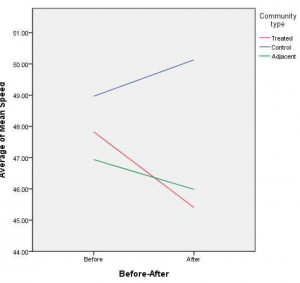BttF Statement on City’s Rejection of Reduced Residential Speed Limit
On July 18, 2012, Winnipeg City Council asked staff for a report on reducing speed limits to 40 km/hr. Last Friday, January 11th, the City of Winnipeg’s Infrastructure Renewal and Public Works Committee considered a report on this motion from the City Administration recommending that the residential speed limit NOT be lowered to 40 km/h and concurred with its recommendation. Bike to the Future spoke in favour of the motion. In fact,
We strongly recommend that the City set a 30 kph speed limit on residential streets, unless otherwise posted.
Please read BttF`s statement in support of the motion for reduced residential speed limits, and our criticism of the report that recommended against this motion.
The growing movement for 30km/hr residential speed limits
- 30 km/hr speed limits are a key component of sustainable travel policies in Denmark, Belgium, Germany the Netherlands, Norway and Sweden;
- there is a major campaign for 20 mile-per-hour speed limits in the United Kingdom.
Benefits of reducing speed limits in residential neighbourhoods
Reduced speed in residential neighourhoods benefit city residents in many ways:
- A more walkable, livable city with a higher quality of life
- A healthier population, as more citizens walk and bicycle, resulting in lower health costs
- More children walking or cycling to school, reducing parents’ “school taxi” duties, reducing traffic congestion near schools, and improving child safety
- Fewer accidents, reduced severity of injury from accidents, and reduced insurance costs
- Reduced consumption of gasoline, fewer carbon emissions, less noise, better air quality, reduced infrastructure costs
- Enhanced social equality: Poorer children are five times more likely to be killed on the roads than their well-to-do schoolmates. 67% of the poorest households have no access to a car
Risk of Pedestrian Fatality vs Impact Speed
- At 30 km/hr, 5% of pedestrians struck by a vehicle will die.
- At 40 kph, 25% will die.
- At 50 kph, 55% will die.
Source: Irish Road Safety Authority
Results of a reduced speed zone pilot project in Edmonton, AB
The recommendation from Public Works was based largely on their interpretation of a report on the results of an Edmonton pilot program on reduced residential speed limits. As this graphic from the report on Edmonton’s pilot program indicates, the communities that piloted the reduced speed zones in fact showed a significant decrease in mean speeds that continued to trend downwards while speed in the control group communities continue to rise.
“Before” and “After” Average of Mean Speed by Community Groups from Edmonton Pilot
Source: Speed Limit Reduction on Residential Roads: A Pilot Project (p. 75)
“the statistical analysis revealed this reduction was significant, indicating the project was successful in reducing the operating speeds”.
Source: Speed Limit Reduction on Residential Roads: A Pilot Project (p. 75)
Important Links
City of Winnipeg Report on Motion to Reduce Residential Speed Limits
Edmonton Office of Traffic Safety – Speed Limit Reduction on Residential Roads: A Pilot Project;
BttF’s position paper (PDF)
Copenhaganize’s background paper (PDF), which documents the international movement towards 30KPH speed limits on residential streets


